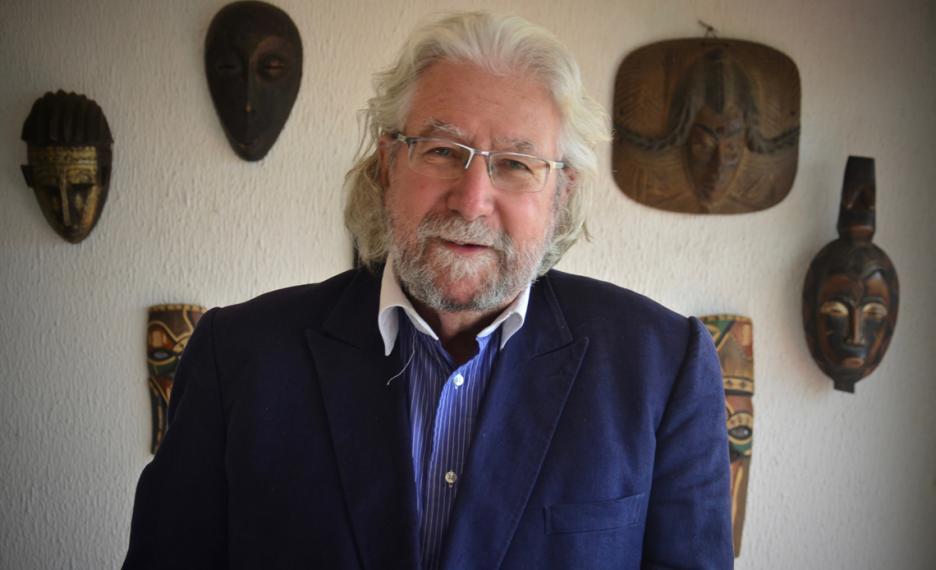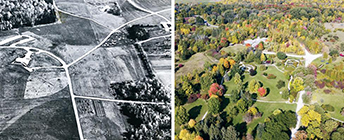Q&A with a landscape architect

James MacGregor (Bachelor of Landscape Architecture, 1970) has led a rich career as both a landscape architect and a sustainable tourism planner. He founded North Africa's leading sustainable tourism planning, development and marketing firm, ecoplan:net, and has improved the sustainability of the tourism industry in over 40 countries.
Tell us about ecoplan:net.
Ecoplan:net is an acronym for ‘ecological/economic planning for the environment and tourism’. As both a planning and training firm, respect for local cultures and their associated environment has always been central to our philosophy, planning proposals and implementation strategies. It was incorporated in 1992 when I realized that there were no Canadian consulting practices that focused on sustainable tourism development planning. Until then, I had worked for two large engineering companies from 1981 to 1992, including the Economic Development and Tourism Department for SNCLavalin in Vancouver. In 1990, I was Lavalins’ representative at the GLOBE ’90 conference where I prepared, and hand delivered Canada’s first ‘Sustainable Tourism Development Action Plan’. The document received widespread distribution and it became obvious that there was a substantial interest in sustainable tourism. Within two years I had to left SNCLavalin to launch ecoplan:net ltd.
What is sustainable tourism?
Originally, I borrowed from the iconic ‘Our Common Future’ Brundtland Report and defined sustainable tourism as “development that meets the needs of current tourism operators and tourists without compromising the needs of future tourism businesses and travelers”. I also liked the idea of borrowing from well-known Aboriginal philosophy that considers all development within the context of seven generations. But through my policy and planning work I have realized it is more than a simple definition. It is an integrated mix of dozens of individual policies and implementation actions, including energy reduction, water conservation, waste management, responsible governance, architectural preservation, marine debris reduction, biodiversity protection, climate change adaptation, etc.
Can you provide an example of your work?
Two years after establishing ecoplannet I was hired by the Organization of American States in Washington to prepare the ´Bahamas Sustainable Tourism Development Policies and Implementation Strategy’. The policies generated substantial interest in the Caribbean particularly after being reviewed in the Economist magazine and considered a “model for sustainability in small island state”.
10 years ago I added climate change adaptation as a critical policy initiative and have since encouraged some nations, particularly small island states, to reduce their efforts on such initiatives as CO2 reduction and focused on the bigger issues, including adapting to rising sea levels, storm surges, hurricane infrastructure resilience, and food security. The entire Caribbean produces less than 1% of the global CO2 emissions yet will undergo massive geographic and economic impacts because of global warming, particularly the loss of coral reefs and devastating sea level rise.
What do you think has been ecoplan:net’s biggest impact?
I believe the 280+, 5–10-day workshops that we have delivered to 12,000+ participants worldwide has had the biggest impact. Training and one-on-one communication provides the opportunity to transfer the ethical and practical components of ecosystem-based planning to those interested in the responsible socioeconomic development of their communities. These concepts know no boundaries and have the same relevance and impacts in South Africa, Brazil or Romania.
How has your BLA degree influenced your career?
Landscape architecture at the University of Guelph helped me develop a real sense of accomplishment in practicing each component of the planning process, from vision/goals and objectives through to the market research and necessary capacity building requirements, sustainability principles and action plan. The degree also gave me the fundamental tools and ‘ecological literacy’ to become a sustainable tourism planner. In my line of work, I must be thoughtful and accurate in identifying the vision, as well as understand the demand and project purpose.
What inspired you to pursue BLA at the University of Guelph?
I was entering my third year in agriculture at MacDonald College (McGill University), focusing on animal husbandry hoping that I would someday go to Guelph for veterinary medicine. However, that year I had the option to take a course in horticulture. The professor was a very distinguished gentleman, “Mr. Louis Peron, BLA Cornell, ’34” (it was written like that on all his correspondence). One day he presented a landscape project that he was doing for the autoroute between Montréal and Québec City. I remember being very impressed with the transformation of a boring 250 km of highway into a rather exciting visual experience. At least that’s what the graphics suggested! As soon as I indicated an interest in landscape architecture, he tried to convince me to go to Cornell, but the school had just opened in Guelph, so I applied immediately. One of the best decisions I ever made.
Have your career aspirations evolved over time?
I left Guelph with similar aspirations as of those of my colleagues, an interested and commitment to building a better environment and protecting the diminishing natural resources. At the time, that was typically accomplished through urban and national/regional parks, streetscapes, river corridors, etc. I migrated to the tourism sector because, as the world’s largest industry, I felt it was one of the best vehicles for incorporating my sense of environmental responsibility and professional knowledge. Over the past 8-9 years, I have been consumed by the existential threat of global warming and our significant role as landscape architects in advancing and implementing climate change adaptation solutions. Our profession has uniquely provided us with many of the fundamental tools that can greatly reduce the impacts of an increasingly hostile environment for future generations.
Was it always a goal to work abroad?
I am not sure if you can ever really anticipate working in as many countries as I have. As of 2020, I have worked in 43 countries several of which I would have known nothing about (e.g. North Korea, Comoros) upon graduation. In fact, the year I graduated, I remember sitting in the studio with my classmates talking about the future aspirations; at the time I wanted to be Superintendent of Banff National Park.
What advice do you have for those interested in sustainable tourism?
Those just graduating will live in a very different environment by the time they are my age. Current trends suggest that by, say 2080, global temperatures might be 3.0°C or even 3.5°C above preindustrial levels. For those just entering the workplace who want to be 'part of the solution’: define your passion, acquire the necessary information and understanding and practice and simply practice your ethic. Get a master’s degree. Not necessarily immediately after graduating as a landscape architect, but take two or three years, clearly identify what you were deeply care about, and then support that enthusiasm with a graduate education particularly if you want to work for international donors/banks. For instance, if you wish to secure work with the various international donors (e.g. USAID, UNDP etc.) and development banks (World Bank, Asian Development Bank etc.) then a master’s degree is required for all assignments. Although this may sound "cliché”, keep learning and expanding your understanding of issues that concern you. And share that information with others. As a landscape architect I have had more opportunities than I could’ve realized to influence national policies, educational programs and curricula, social and economic development options, etc. This is truer than ever as it pertains to the protection of the environment.
This article was originally published in the LIBRANNI 2021 / Vol. 3
 |
Read more:A 50-year-old living laboratory
|
 |
Read more:Analyzing a world of data |